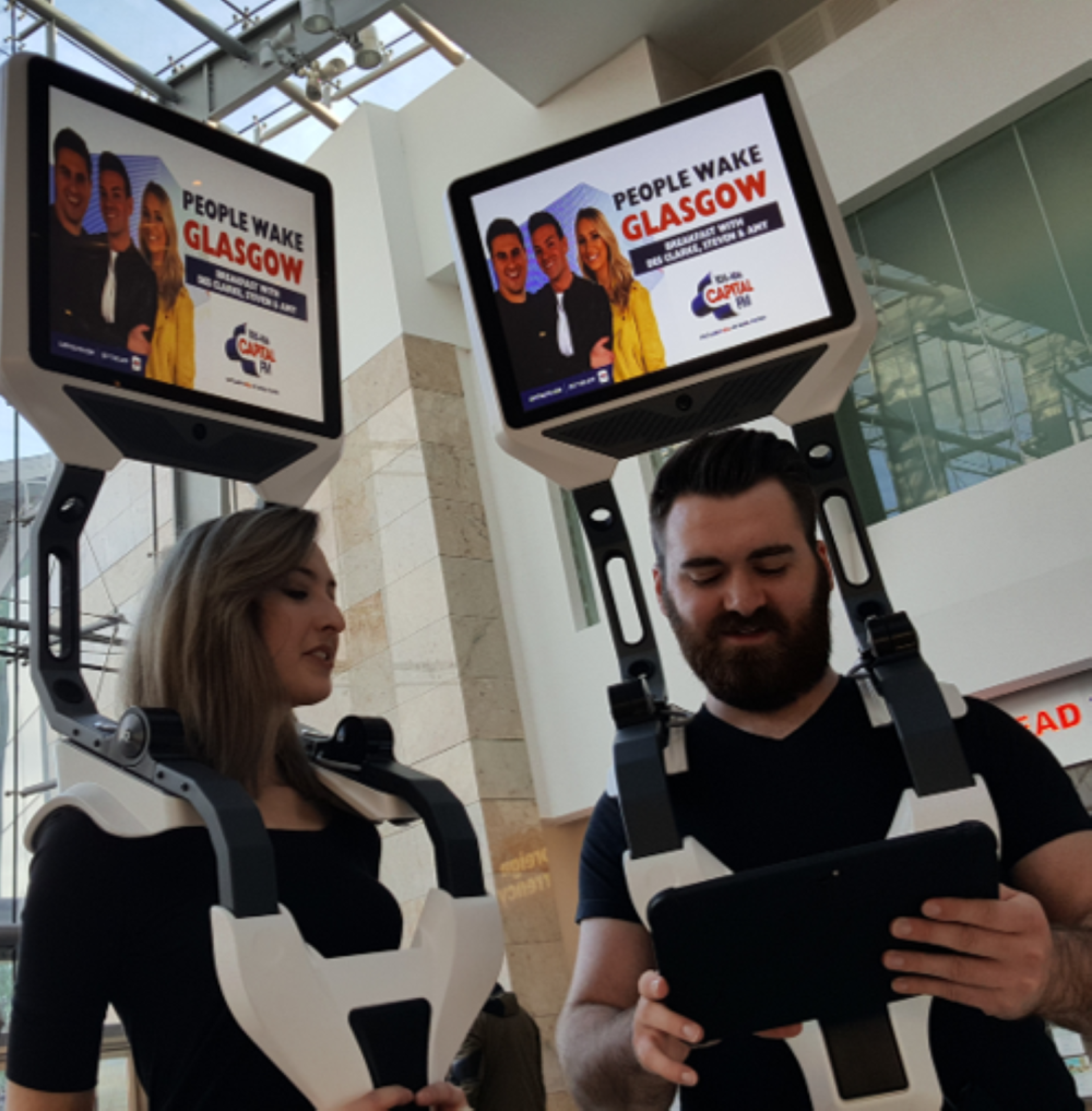Advertising Vans, Bikes and iWalkers
AdVans
AdVans
AdVans are versatile and effective advertising tools that offer flexibility, high visibility, and a unique way to engage with potential customers. Whether you're looking for a cost-effective option or want to target a specific event or location, AdVans provide a creative, dynamic solution that traditional advertising methods can't consistently deliver.
Digital LED AdVans
Digital LED AdVans are mobile advertising vehicles equipped with large, high-resolution LED screens that display digital advertisements. These vans are designed to drive around urban areas, events, or high-traffic locations, offering a dynamic, eye-catching way for brands to promote their products or services. The LED screens can show video, animations, static images, and other multimedia content, and the content can often be updated remotely in real-time.


Benefits of Digital AdVans:
Mobile Advertising: Since they are vehicles, these vans can reach a wide audience by moving across different locations, targeting specific demographics or high-traffic areas, such as busy streets, festivals, or public events.
High-Resolution Screens: The LED displays on these vans are typically high-quality, capable of showcasing bright and vibrant ads even in daylight, making them stand out in crowded environments.
Real-Time Content Update: Many digital ad vans allow advertisers to change the displayed content remotely, either in real-time or on a set schedule, giving brands the flexibility to adapt their message or promotions quickly.
Interactive Potential: Some digital ad vans may include interactive features, such as QR codes that passers by can scan, enabling them to engage with the brand online, enter contests, or receive special offers.
Targeted Advertising: The mobility of the vans allows advertisers to strategically choose locations that are most likely to reach their target audience, whether it's a specific neighbourhood, event, or time of day.
Eco-Friendly Options: Some digital ad vans are designed with eco-friendly features, using electric vehicles (EVs) as their base and minimising their carbon footprint compared to traditional billboard advertising.
Frequently Asked Questions
What are the benefits of ad vans?
Quite simply, it’s the mobility and flexibility they give your advertising. Rather than an ad in a static location, ad vans can drive your campaign to your customers – from a single street to a specific town centre. Where there are no poster sites, use an ad van instead. And where accessibility is tricky, a bike or iWalker can get there easily – so no pedestrian zone is out of reach. The sheer scale of a billboard-sized ad van makes it unmissable - in a selection of locations, not just on one billboard. And digital ad vans bring your campaign to life with moving images and a soundtrack to capture everyone’s attention.
How much does ad van advertising cost?
Ad vans and ad bikes offer a flexible and cost-effective format, suitable for all marketing budgets. Costs vary depending on a number of factors, including:
- The number of ad vans or ad bikes being booked
- The predicted audience delivery figures
- The duration of the advertising campaign
Based on your target audience and geographical area we can provide you with a fully costed proposal to meet your advertising objectives and fit with your budget.
Where can I use an ad van near me?
We can advise on the legalities, but in many cases, an ad van can take your campaign where other traffic isn’t permitted - and ad bikes can take your message onto pedestrian streets. No poster sites where you need to spread the word? No problem, we can take an ad van there instead. Tell us where you’d like your ad van to go and we’ll plan the route and find the perfect spot.
Who sees ad vans?
Everyone! They’re mobile, so your message travels – through cities, to out of town shopping centres, sports venues, the beach, festivals... in fact pretty much anywhere you want your campaign to go. Other vehicle users will see it on the move, pedestrians will see it as it drives past, and your target audience will see it when it parks up in front of their eyes.


Key Features of Digital Advans
Fixed Billboards: Unlike digital LED ad vans, which feature screens capable of changing content, billboard ad vans may have either fixed posters or digital billboards that display static ads. The fixed type involves vinyl or printed ads mounted on the side of the van, while digital billboards can show rotating images or simple animations.
Non-Electric Setup: Unlike some digital LED ad vans, many billboard ad vans do not rely on advanced technology for content display. They are typically powered by traditional vehicle engines or external power sources to keep the ad in place.
High Mobility: Billboard ad vans can travel throughout cities, neighbourhoods, or even across regions, providing an opportunity to promote messages across different zones. The van’s route and location can be strategically planned for maximum exposure.
Cost-Effective for Short-Term Campaigns: Since they require less technology than digital LED ad vans, billboard ad vans can sometimes be a more budget-friendly option for short-term, local advertising campaigns. They are especially useful for promotions, limited-time offers, or brand visibility in specific locations.
Physical and Eye-Catching: The physical size of the billboard ad van itself, along with the large-format visuals on the side of the vehicle, often makes it more noticeable compared to stationary billboards. The movement of the vehicle adds an element of dynamism and allows advertisers to grab attention in locations where traditional billboards might be out of sight.
Socialized and Customizable Advertising: Like other mobile forms of advertising, billboard ad vans allow brands to customize their campaigns based on local or regional factors. This makes them ideal for businesses looking to target specific neighbourhoods or specific groups of people.
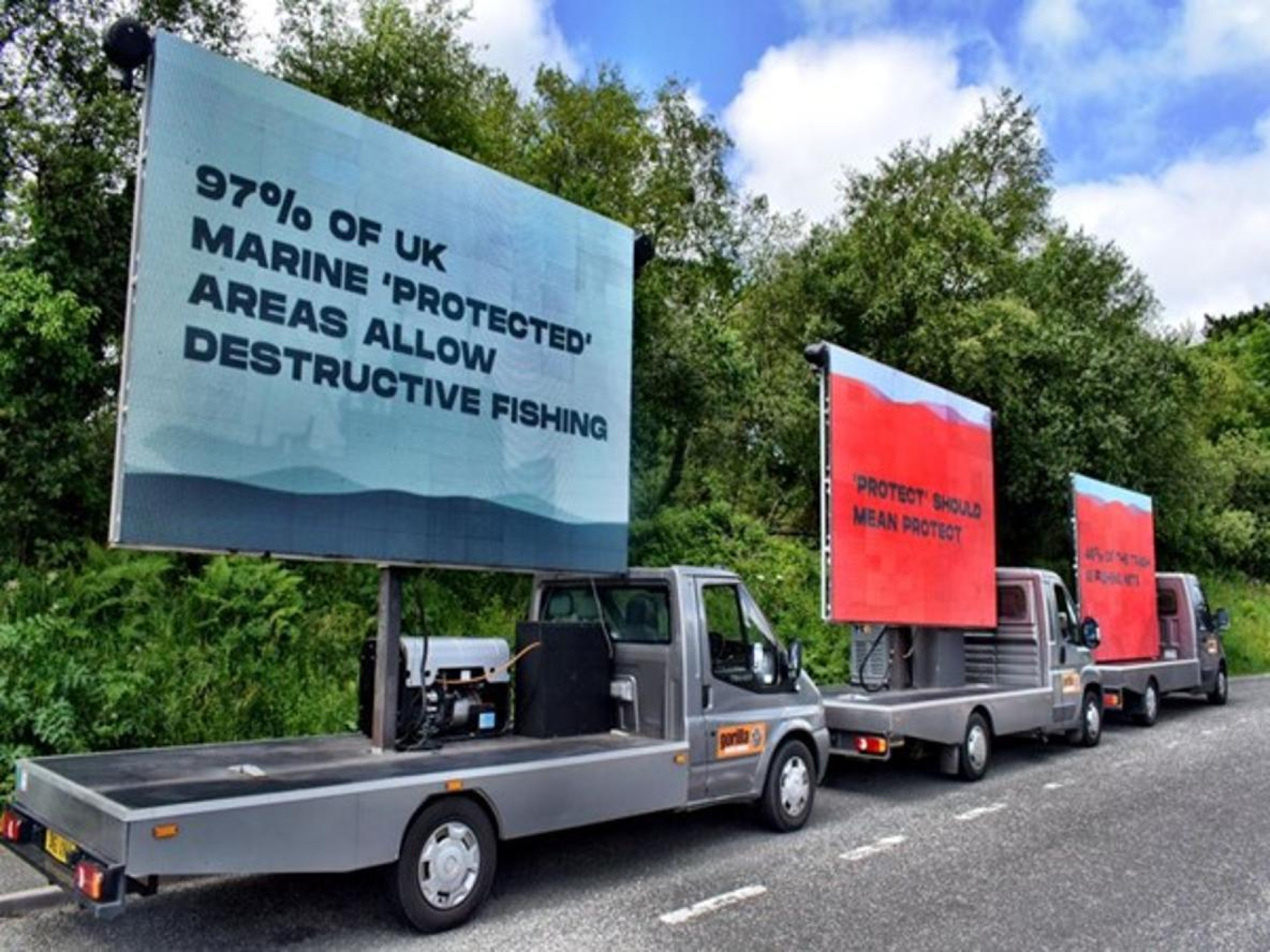

Common Uses:
Local Promotions: Small businesses, pop-up shops, or local events can leverage these mobile billboards to reach consumers in specific areas.
Event Targeting: Billboard vans often travel to festivals, parades, sports events, and concerts, providing advertisers with high visibility during these large gatherings.
Political Campaigns: Much like digital LED ad vans, these vehicles are used for political candidates who want to take their message directly to voters in targeted areas.
Branding on-the-Go: Companies that need to maintain high visibility across multiple locations within a short timeframe often use billboard ad vans to ensure their message is consistently in front of potential customers.
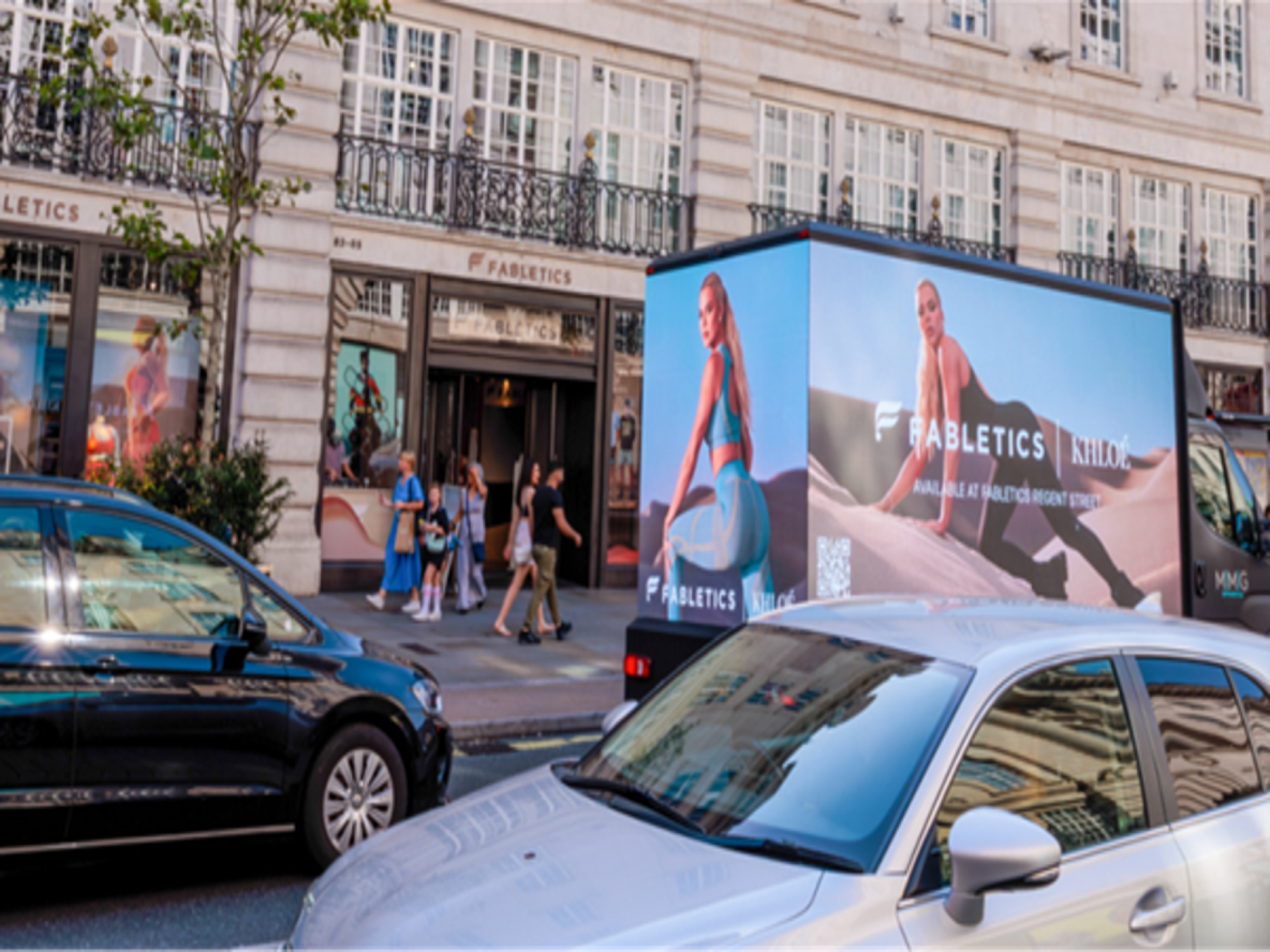
What's the cost of AdVans ?
The cost of ad van advertising in the UK can vary widely based on factors such as the type of van, location, campaign duration, and targeting requirements. A basic static ad van for a local campaign might cost around £600 to £1,500 per day, while a more sophisticated digital ad van could cost between £800 and £2,500 per day. For longer-term campaigns, weekly rates can range from £2,500 to £15,000, with premium costs for national coverage or high-demand events. Ad van advertising offers a flexible and impactful way to reach a targeted audience, but costs can vary significantly based on your campaign’s scope and goals.
Data and stats
On average, mobile billboards reach 30% more people per mile than stationary billboards.
A Nielsen study showed that 80% of people recalled seeing a mobile ad vehicle compared to just 50% for static billboards. This suggests that the dynamic, moving nature of ad vans makes them more memorable to passers-by.
According to a Survey by Adomni, 56% of people reported taking action after seeing a mobile billboard, including visiting a website or following a media product.
Watch our quick video on digital ad van advertising:
Ad Bikes
Ad Bikes
Ad bikes, also known as advertising bicycles or bike billboards, are bicycles fitted with advertising displays to promote products, services, or brands. These bikes are typically used for mobile advertising in urban environments, offering an eco-friendlier and more localised alternative to traditional advertising methods. Ad bikes combine the visibility of an advertisement with the mobility of a bike, making them an excellent tool for reaching specific target audiences in areas with high foot traffic, such as city centres, festivals, or events.
Key Features of Ad Bikes:
Static Displays: Most ad bikes use large frames or banners with fixed posters or signs for simple, constant messaging.
Digital Displays: Some models feature digital screens that show rotating ads or videos for more dynamic engagement.
Mobile and Flexible: Ad bikes can travel through various locations, including hard-to-reach areas like pedestrian zones, offering targeted and flexible advertising.
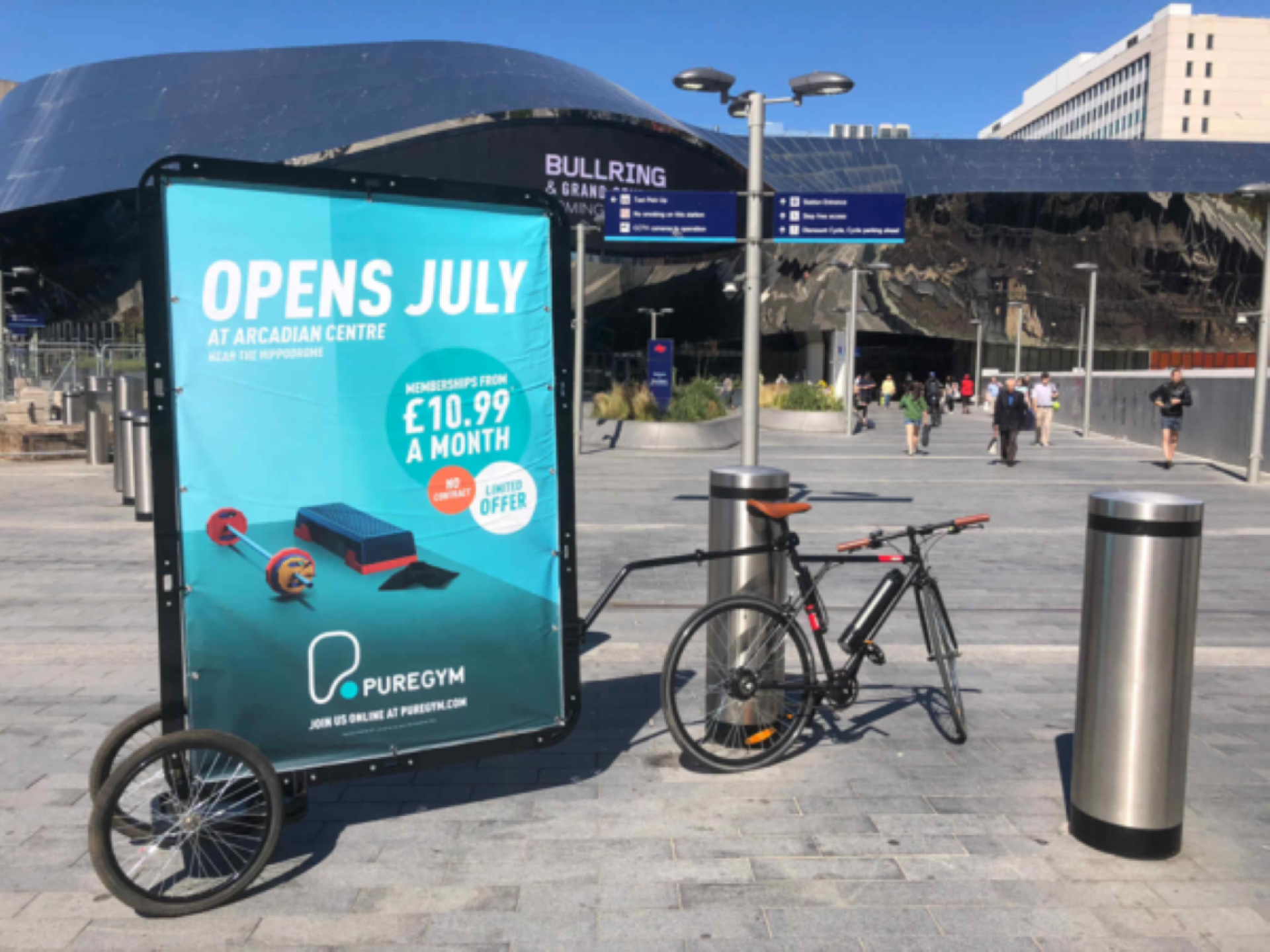
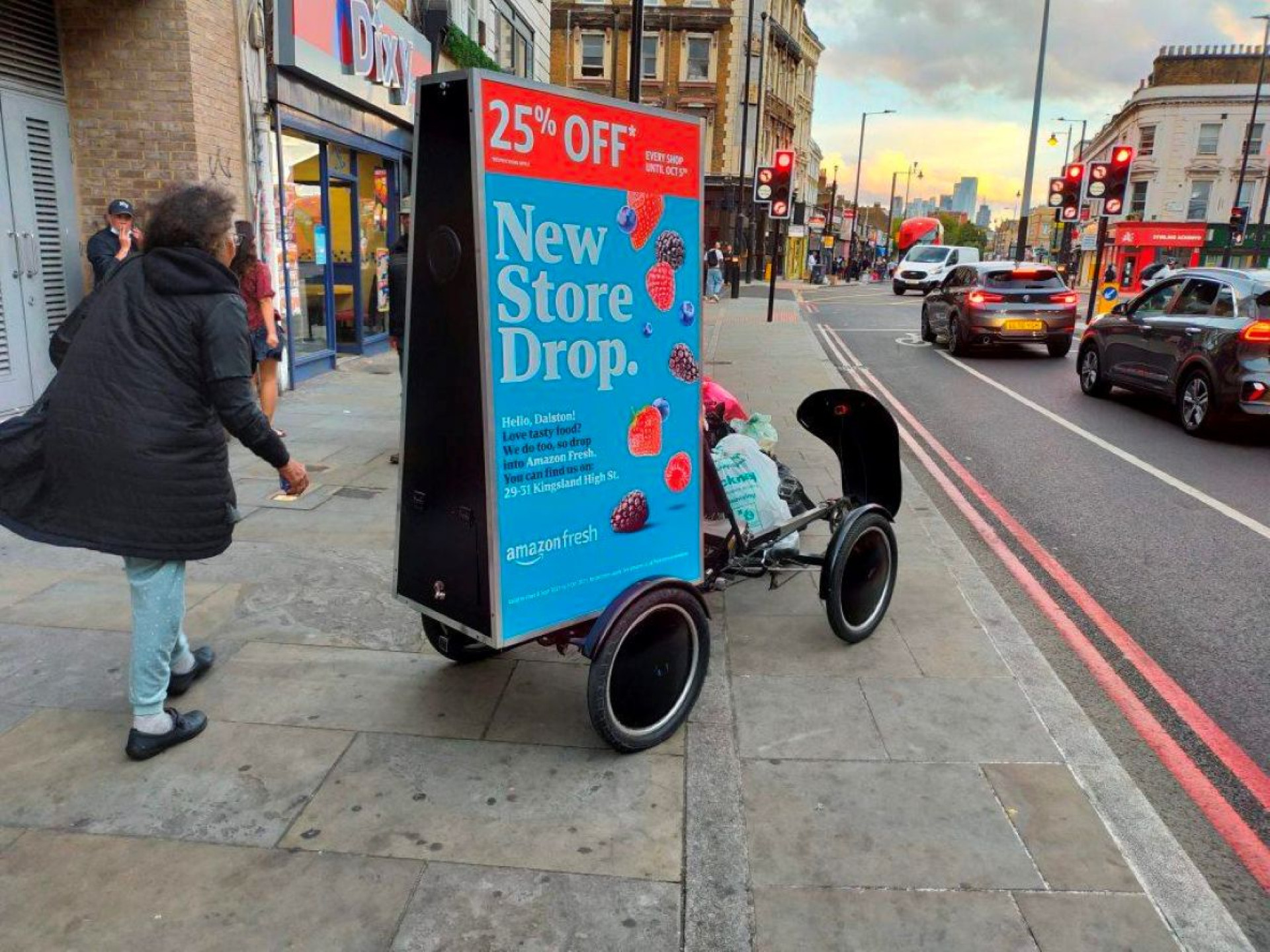
Ad Bikes Uses:
Event Promotion: Ad bikes are frequently used to promote festivals, concerts, and community events by cycling through event areas or surrounding neighbourhoods.
Local Business Advertising: Small businesses or start ups can use ad bikes to create awareness in specific areas, offering a cost-effective way to reach their local customer base.
Product Launches: Companies launching new products can use ad bikes to create buzz in specific areas or target high-traffic zones with samples, flyers, or demos.
Public Awareness Campaigns: Non-profits or government agencies may use ad bikes to spread messages about health, safety, environmental issues, or social causes, often in urban areas or near schools, parks, and busy streets.


Benefits Of Ad Bikes
Eco-Friendly Advertising: Ad bikes are a sustainable form of advertising because they are human-powered. They don't rely on fossil fuels or create emissions, making them an eco-friendly option for brands looking to promote sustainability.
Personalized and Targeted: Ad bikes can be ridden through specific areas to target demographics or events. For example, a bike might be used to advertise a new cafe in a busy downtown area or promote a local event at a park. This targeted mobility allows advertisers to reach their audience where they are most likely to engage.
Visibility and Impact: Due to their mobility and presence in high-traffic areas, ad bikes can generate a lot of attention. The fact that they move through different parts of a city allows them to be seen by a diverse group of people. The novelty of a moving advertisement can also catch people's interest more than static billboards.
Cost-Effective for Local Campaigns: Compared to larger vehicles like digital ad vans or traditional billboards, ad bikes are generally more affordable, making them ideal for small businesses, local events, or specific short-term promotions.

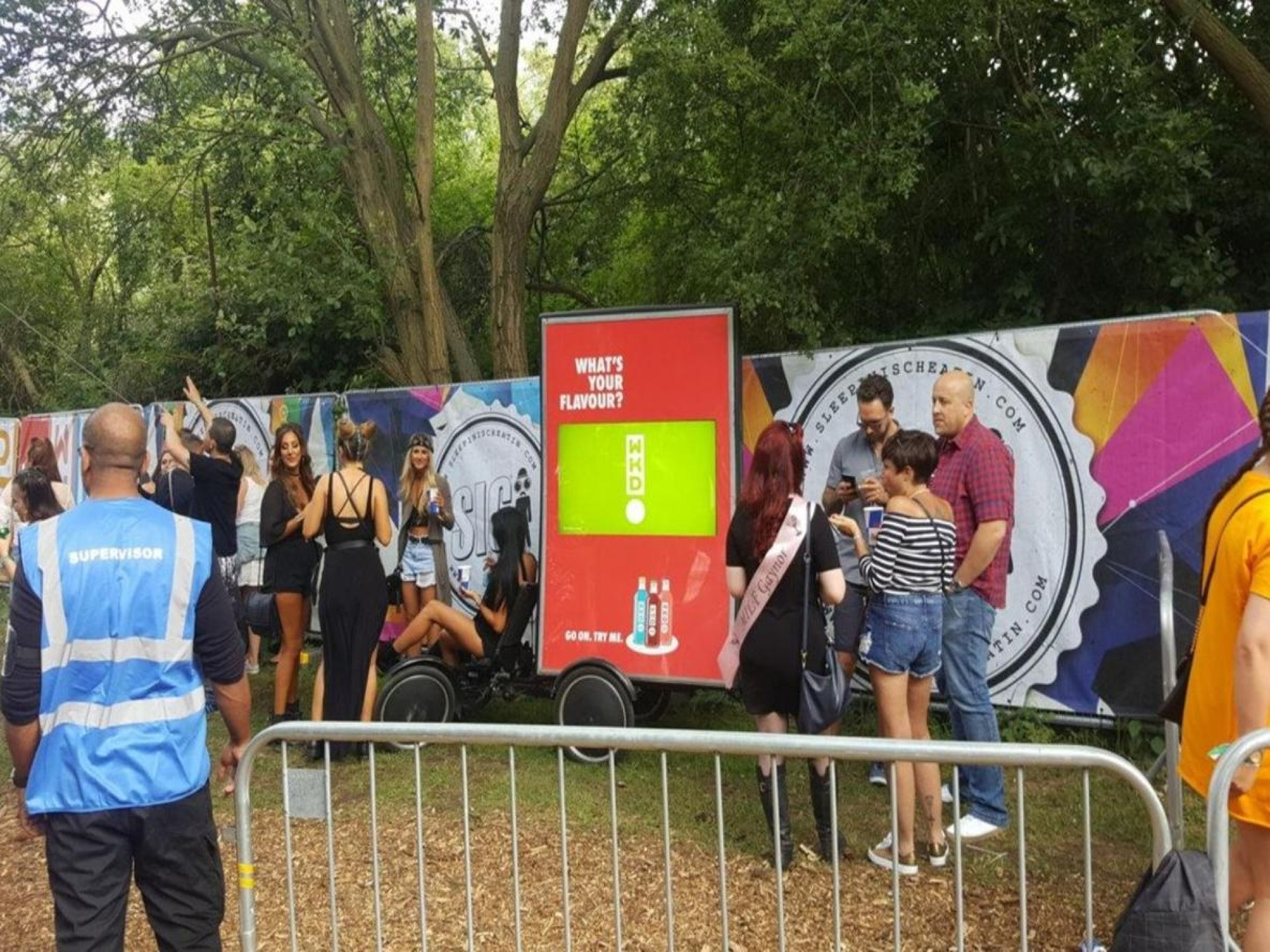
iWalkers
What Are iWalkers ?
An iWalker is a relatively new form of mobile advertising that combines a walking platform with digital signage to promote products, services, or brands. It is essentially a human-powered, wearable advertising device that allows a person to walk around while displaying advertisements on a screen or billboard attached to the walker's body. Think of it as a "billboard on the go" that is carried by an individual, rather than a vehicle or bike.

Key Features of an iWalker:
- Mobile Digital Advertising: An iWalker usually features a digital screen or large banner attached to a harness or frame worn by the individual. These digital screens can display static images, videos, animations, or scrolling text, offering a flexible and dynamic advertising format.
- Eco-Friendly: Since it is human-powered (the person walks while carrying the ad), it is a sustainable and environmentally friendly form of advertising. It has a minimal carbon footprint compared to vehicles like ad vans or trucks, making it an attractive choice for brands promoting sustainability.
- Flexibility in Targeting: Because the iWalker is mobile and operated by a person, it can target specific, high-foot-traffic areas that are often hard to reach with larger mobile ads or stationary billboards. This makes it ideal for urban settings, events, shopping districts, festivals, and even concerts.
- Interactive Engagement: Some iWalkers may include interactive features, such as QR codes, which passersby can scan to receive more information, access promotions, or engage with the brand online. This creates opportunities for direct engagement and conversion.
- Human Element: The person walking around with the advertisement can interact with the audience directly, providing a more personal, human touch to the marketing campaign. This can also add an element of surprise or novelty, catching people's attention more effectively than traditional advertising methods.
Common Uses of iWalkers:
Event Promotion: iWalkers can be used to promote events, concerts, or festivals in specific areas. They can walk through crowds, making capturing attention in busy environments easy.
Brand Activations: They are ideal for experiential marketing campaigns that want to create a buzz or spark curiosity. For example, launching a new product or service through live, on-the-ground promotions.
Public Awareness Campaigns: Nonprofits or governmental organizations can use iWalkers to distribute key messages to the public, raise awareness for causes, or promote health and safety initiatives.
Local Business Advertising: Small businesses or local events can use iWalkers to increase visibility in specific neighbourhoods or at street-level locations, creating brand recognition in targeted communities.

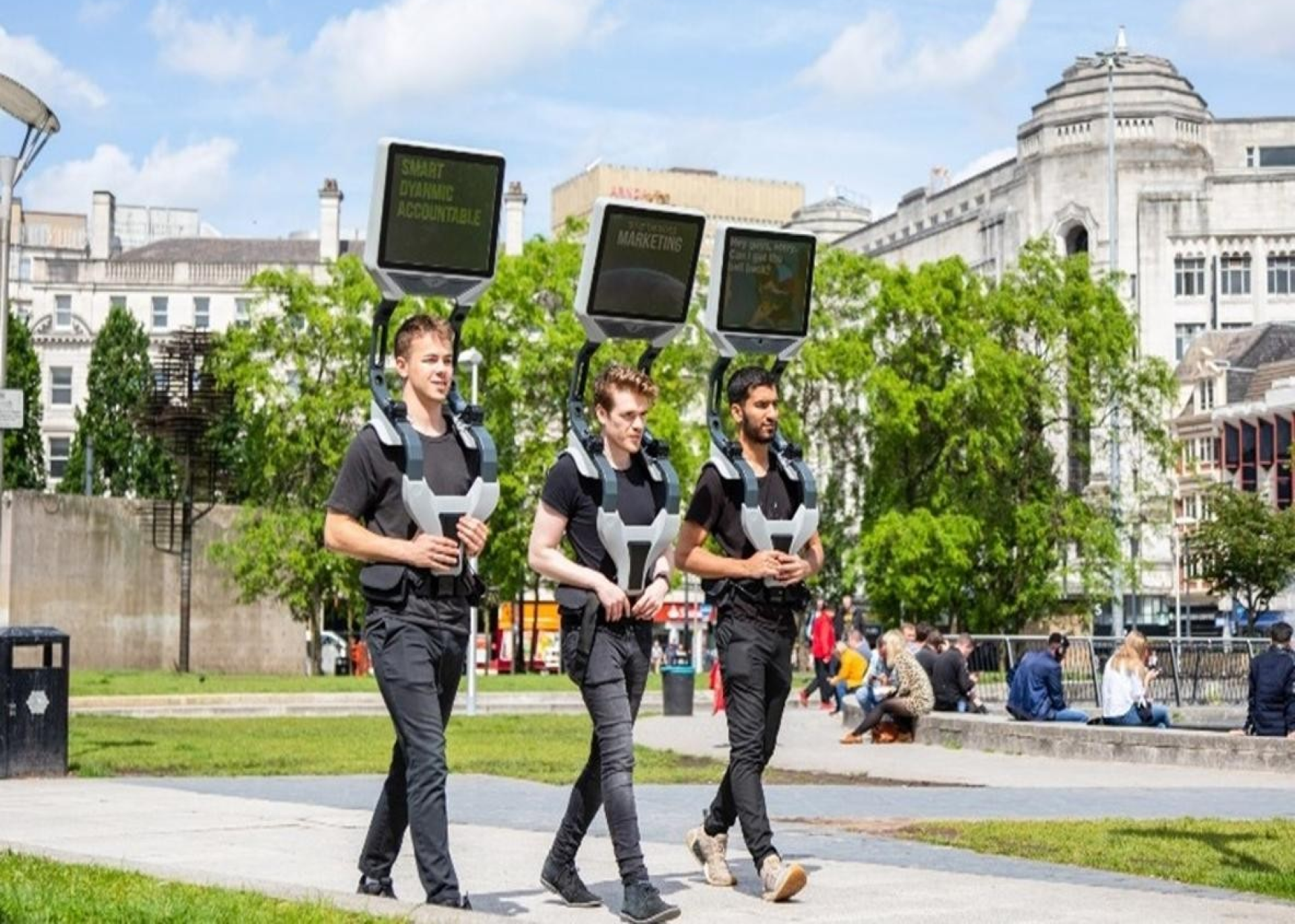
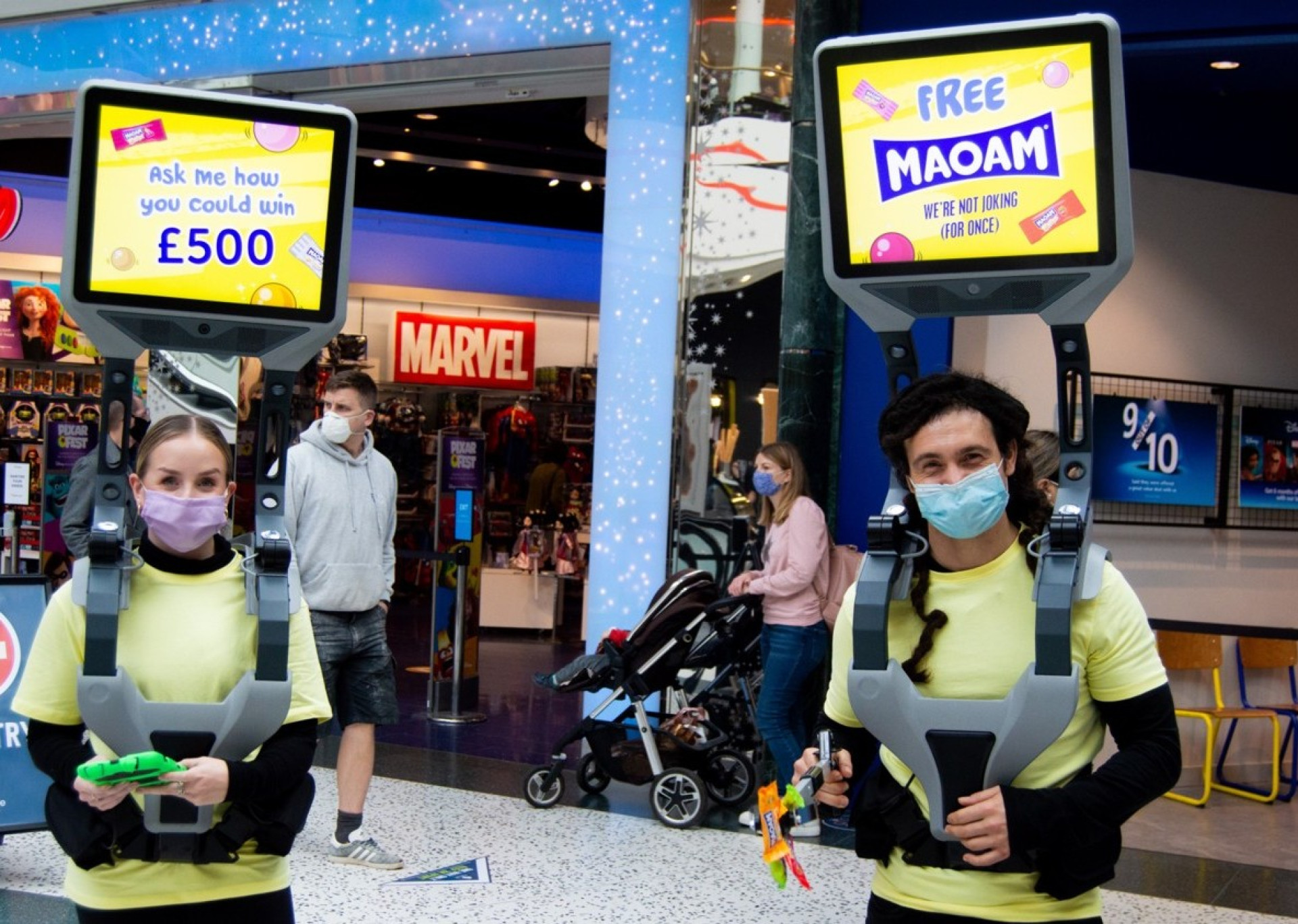
Advantages of iWalkers :
Highly Personalized and Engaging: The human aspect of the iWalker makes the ad more relatable and approachable compared to traditional static advertising methods.
Access to Crowded Spaces: iWalkers can access places where larger forms of advertising might be restricted, such as narrow streets, crowded pedestrian zones, or specific events.
Differences From Other Mobile Ad :
Size and Mobility: iWalkers are much smaller and more mobile compared to larger mobile advertising formats like ad vans or billboard bikes. The compact, wearable nature of the iWalker allows it to fit into crowded spaces and move with ease.
Human Interaction: Unlike digital billboards or vehicle-based ads, the iWalker often comes with the possibility for direct human engagement, which can make it feel more personal and approachable.
